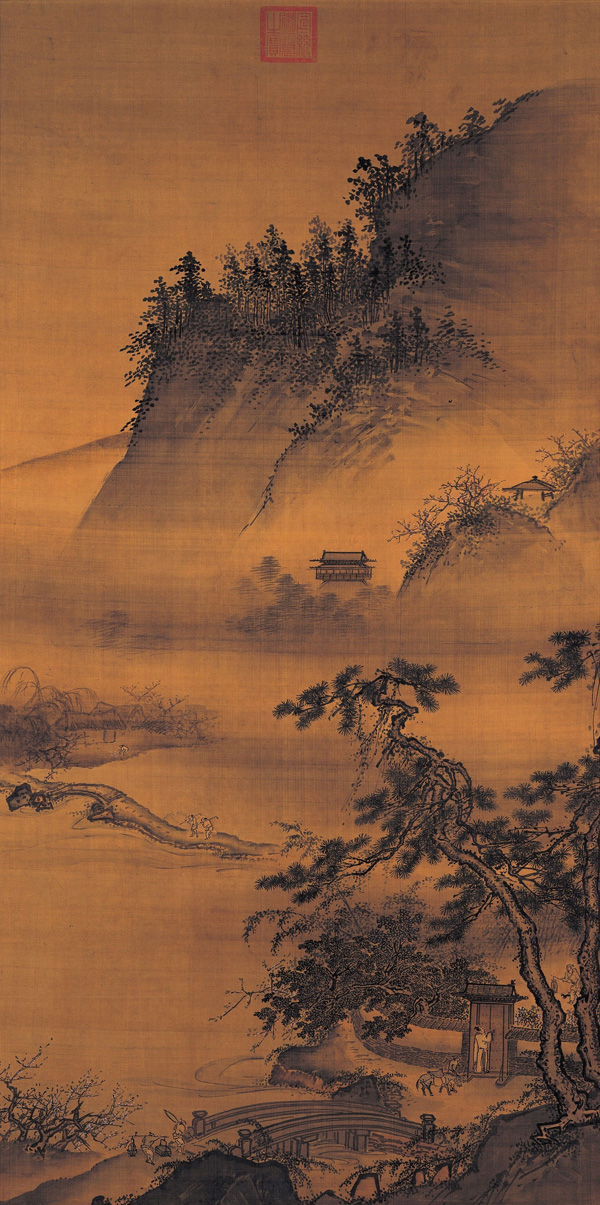Returning Late from a Spring Outing (春遊晚歸)
Dai Jin (戴進, 1388-1462), Ming Dynasty (1368-1644)
Hanging scroll, ink and colors on silk, 167.9 x 83.1 cm, National Palace Museum, Taipei
In the lower right corner is a wall surrounding a residence blocked from view. The greenery and peach blossoms in the scene indicate the season is spring.
Judging from the darkness, it appears to be late in the day. A scholar is knocking at the door as a servant approaches holding a light, illustrating the poetic notion of a master returning late from a spring outing.
Depicted also is an expanse of water with a path upon which local farmers shoulder hoes and return home. In the distance, womenfolk are feeding the fowl.
Although the figures are small, the details of local life reveal the artist’s skill at observation and depiction.
Though Dai Jin based the style here on those of Ma Yuan (馬遠, c.1160-1225)
and Xia Gui (夏珪, fl. 1180-1230) in the Southern Song (1127-1279), his daring brushwork emphasizes expressiveness for an impressive style that is spirited and varied.
The compositional formula of leaving a large portion of the surface blank also derives from the Southern Song academic mode. However, the surface is flatter with the distances appearing in the same plane.
This emphasis on surface rather than space is a distinctive feature of Zhe School painting. Although bearing no signature or seal of the artist, the style belongs to that of Dai Jin and was probably painted by him when he was in Beijing.
Although Dai Jin’s style was influenced by various Song and Yuan styles, it appears to derive most clearly from the Southern Song court manner.
However, he was not constrained by any particular style as he developed his own mode of painting. His daring yet mature brushwork yielded a variety of ink effects.
Spirited and free, but not uncontrolled, this is a classic example of Dai Jin’s style.

Replicas available: